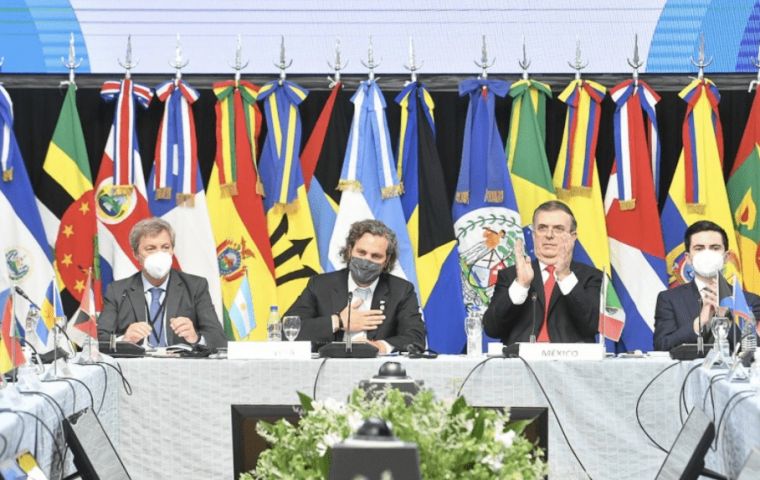MercoPress. South Atlantic News Agency
Slowdown deepens in Latin America with regional growth forecasted at 1,8% this year, ECLAC report
 ECLAC anticipates average growth of 1.8% for the region because of higher global volatility from the war in Ukraine
ECLAC anticipates average growth of 1.8% for the region because of higher global volatility from the war in Ukraine The economies of Latin America and the Caribbean face a complex situation in 2022 because of the Russia/Ukraine war with its shadow of uncertainty for the world economy. This is negatively affecting global growth, and at regional level, lower expected growth will be accompanied by higher inflation and slower employment recovery.
According to new estimates released by the Economic Commission for Latin America and the Caribbean (ECLAC), average growth of 1.8% is anticipated for the region in this context of higher global volatility. South American economies will grow 1.5%, Central America and Mexico 2.3%, while 4.7% growth is expected for the Caribbean economies (excluding Guyana).
The new figures were announced by the organization’s acting Executive Secretary, Mario Cimoli, to the ambassadors for the Group of Countries of Latin America and the Caribbean (GRULAC) during a meeting held at United Nations headquarters in New York.
According to ECLAC, the conflict in Ukraine will also impact negatively world trade dynamics, causing a decrease in foreign demand for Latin America and the Caribbean produce. The region’s main trade partners – United States, China and the European Union– will see lower growth rates than those expected before the conflict began. In the case of the US, growth will be 2.8% (1.2 percentage points lower than previous projections). Projected growth for China is at 5% (0.7 percentage points less than before the hostilities), and for the EU, growth of 2.8% is expected (1.4 percentage points lower than pre-conflict projections).
The war in Ukraine has also caused an increase in commodity prices, mainly in fossil fuels, some metals, food and fertilizers. This price increase is in addition to higher costs because of disruptions to the supply chains and interruptions in maritime transport. Price hikes have given impetus to world inflation rates, in some countries reaching historic highs in 2022, and in this scenario, higher interest rates in developed countries can be expected.
The United Nations regional commission adds that monetary adjustments in the countries of the North have accentuated the tightening of global financial conditions witnessed in recent months, causing greater volatility in financial markets. Alongside the increase in global aversion to risk resulting from the conflict in Ukraine, this has jeopardized capital flows to emerging markets. These trends may be accentuated in the coming months, especially if inflationary pressure persists in developed economies and the central banks in these economies deepen contractive monetary policies, including rate hikes and the reversal of monetary stimuli (asset purchases).
As in the rest of the world, inflationary dynamics have accelerated in Latin America and the Caribbean, warns ECLAC. As of March 2022, regional inflation is estimated at 7.5%, and many central banks in the region anticipate sustained high inflation for the rest of the year, especially with increased international energy and food prices, plus disruptions in global supply chains and persistent high transportation costs.
In response to higher inflation, monetary policy in central banks in the region has become more restrictive and the majority have significantly raised interest rates, which in most cases have reached levels similar to those back in 2017.
Retreating fiscal momentum is expected to accelerate in 2022, in step with the evolution of macroeconomic conditions and increased financial costs. Public expenditure will contract, reinforcing the reduction observed in 2021 and reducing potential fiscal policy contributions to growth.
Likewise despite labor markets showing signs of recovery, this has been slow and incomplete. The pace of job creation in 2022 is expected to decline, driving unemployment rates higher this year, warns ECLAC.




Top Comments
Disclaimer & comment rulesCommenting for this story is now closed.
If you have a Facebook account, become a fan and comment on our Facebook Page!